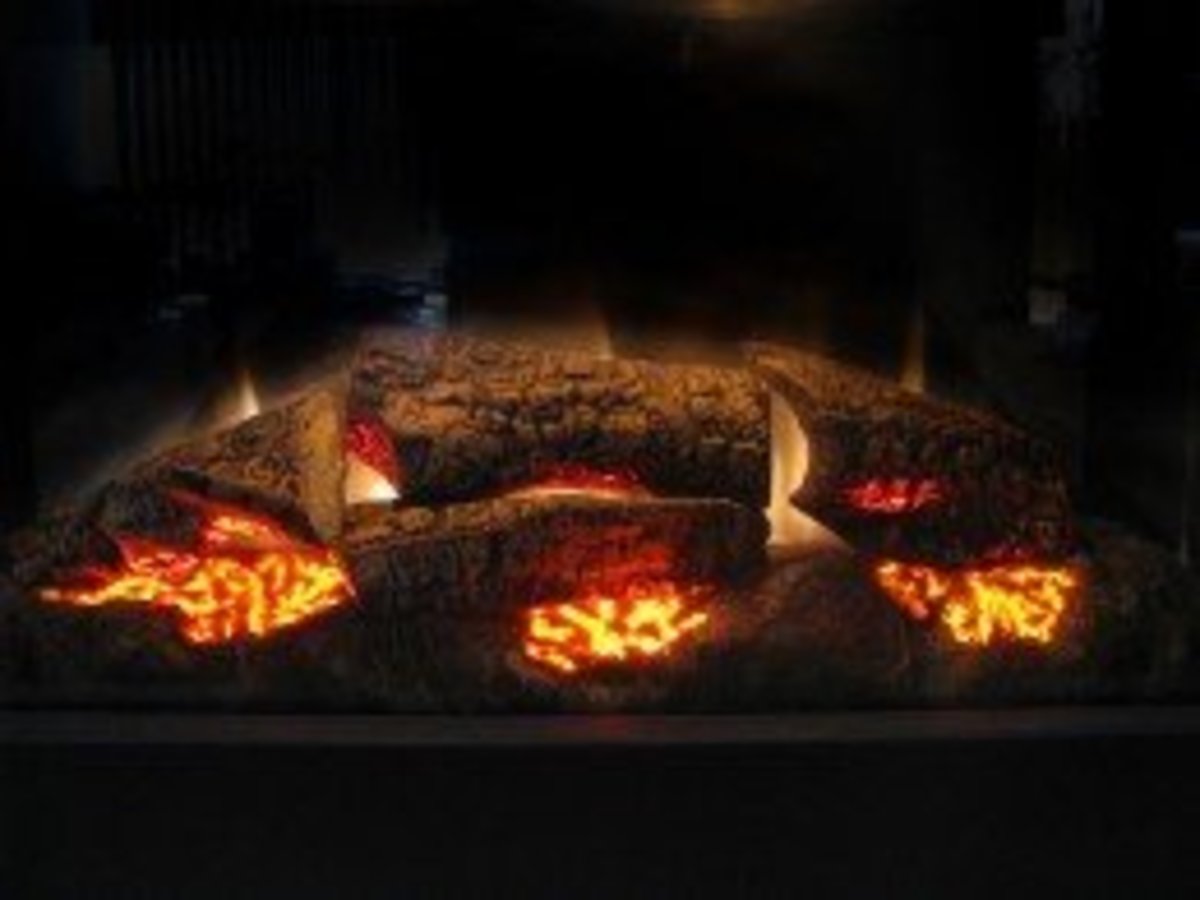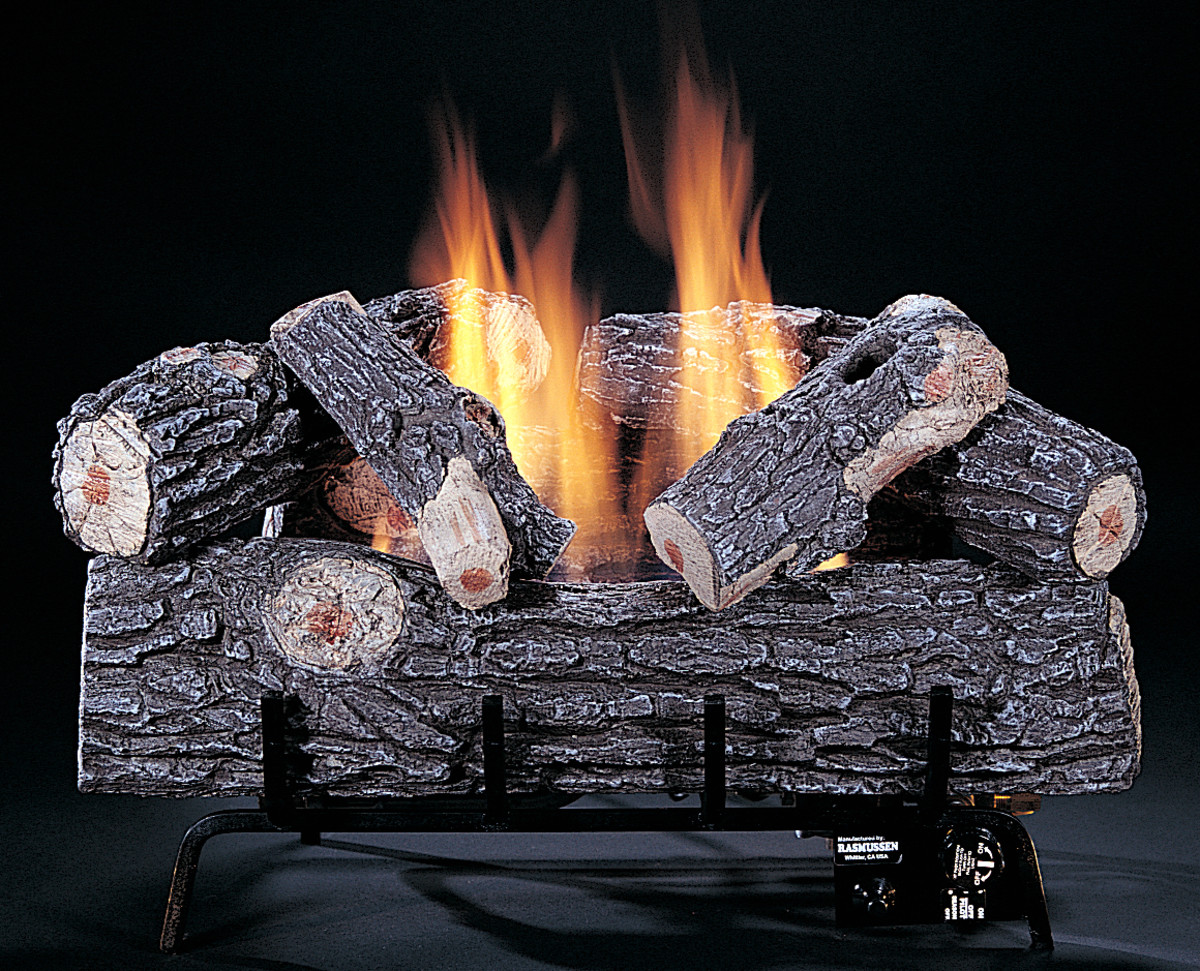The Art of Stacking Firewood
Choose a Location
Plan ahead when selecting a location for your firewood stack. Depending on how much you are planning to store, you'll want to select a spot that will be convenient to where you'll be needing it as well as out of the way of other activities. When I first started burning wood to heat my home, I stacked the wood about 100 yards from the house on the edge of the lawn. It was well out of the way of all my outdoor activities. However, it was a long ways away when if came time to start moving it to the basement in preparation for the winter heating season. I discovered it was a little too out of the way.
So, the following year, I stacked it up next to the back of the house. Then when I needed to service the the vent on my clothes dryer, I had to move half the pile to get access to do the repair.
Choose wisely, moving a wood pile may not be your idea of fun.
The wood pile
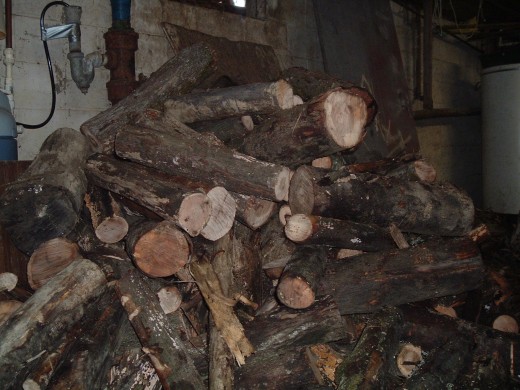
The Changing Seasons
As the cool crisp air blows across the valley near my home, the smell of Fall is in the air. Every year at this time, as the fresh scent of the changing seasons begins to waft past my nose, a sense of dread, and joy, wells up inside me. The sense of dread comes from the thought of lugging piece, by piece, by piece of firewood from the woods, to my wood trailer, transfering the wood from the trailer to the basement, then stacking 30+ face cord in preparation for winter. The joy comes from being in the woods, the sounds of nature while I eat my lunch, the feel of the power of a sharp chainsaw ripping through chunks of hardwood, and the satisfaction of it all in the end of sitting next to a warm fire in the dead of winter.
Heating your home with wood is not for the lighthearted. Even if you have someone else cut and deliver the wood, someone still has to get and keep the fire burning. That means that at some point the wood has to get from where you store it to where you burn it, and that doesn't happen by itself. For now at least the joy I receive from spending time in the woods and the warmth of wood heat is greater than the anguish and pain I suffer from all the hard work involved in getting it in the house. Not to mention the money saved. (I heat a 2500 sq. ft. home all winter for about $200.00 per year. Wages for my time is not included. LOL)
From Woods to Wood Pile
The idea behind stacking firewood is to enable the wood to dry adequately prior to use. If you cut down live trees, and then immediately cut it into firewood size pieces, the wood needs time to "season" or dry out before it will burn efficiently. If there is too much moisture in the wood, you will have a cool, smokey fire that won't provide much heat. I use the "tops" from trees that were harvested by a logging company, so most of the wood I use has had several years to season in the woods. The length of time needed to properly "season" firewood will very depending on the species, and whether it is cut and stacked or left to season on the ground.
Live trees naturally have a moisture content of water and or sap. In addition, seasoned wood can have a high moisture content if it is exposed to rain or snow. If green, unseasoned, or fresh cut wood is being collected, you'll need to season the wood for 3-6 months. Different species of trees take more or less time to fully season. If you are using pre-cut wood that has been laying on the ground in the woods for 6 months or more, you'll only need to get the wood under cover so it can dry out, usually 2-3 weeks or less depending on the amount of air circulation in your storage location.
Getting Started
Whether you are stacking your wood indoors or out, you'll want it to be secure and stable. Stacking firewood is hard enough to do once, and few people would enjoy doing it twice to make up for sloppy work. If you are stacking it outdoors or on the bare ground you'll want to elevate your wood pile so no wood is in the dirt. Any wood that contacts the ground will absorb the moisture in the dirt and eventually rot. Pallets, landscape timbers, or any other pressure treated lumber works well, as it is treated to resist moisture and insects. I stack all of my wood in my basement on the concrete floor and it stays nice and dry.
Once the gathering is done, and the wood is thrown in a pile in the basement, the art of stacking firewood begins. You'll notice from my picture that I don't use the typical firewood logs. Most images of firewood you'll see consist of split wood, larger logs split into triangle shaped pieces. I use what I refer to as "limb" wood, or round pieces. This type of firewood is a little more difficult to stack as it has no flat surface area. The principal for stacking is still the same. The primary key to stacking any firewood is to fit the pieces together as snug as possible. Think of it as assembling a jig saw puzzle. Interlock the pieces and your pile will stay together.
The Pillar
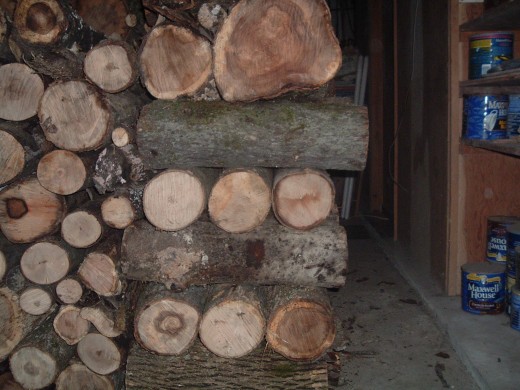
Let the Stacking Begin
The first thing I like to do as I begin my wood pile is lay a starter course the full length of the stack. This gives me a point of reference to make sure the length of my pile is straight. I like to start each layer with the ends lined up evenly on one side. That way I can make sure the stack lines up vertically as well. Any variations in length can stick out on the uneven side. If your pile starts to lean to one side, it will become unstable and susceptible to falling over. If you have the space and your stacking your firewood outside, you can make long piles approximately 4 feet high to maintain stability. If you use your basement like I do, I prefer to stack my piles as high as possible, right up to the basement ceiling, approximately 7 feet. If you stack your wood higher than 4 feet high, you'll want to make sure your stack is stable.
Once I have my starter course laid in a nice straight line, I begin to build my end pillars. I use a criss-cross pattern alternating the wood 90 degrees. Try to use pieces that are uniform in size in each layer as you build your pillar. To keep the pieces of wood in my pillars from rolling from side-to-side I slip a wood chip or small piece of bark under the outside edges. If you are not using braces on the ends, your pillars are crucial to holding your wood pile in place. Do not underestimate the importance of this step. Especially if you build your wood pile higher than 4 feet! Keep in mind how you are going to disassemble your pile for use. If your pile is inherently unstable, as you remove pieces, the whole stack could fall over causing personal injury or property damage.
If I'm using round wood, I try to mix large, medium, and small pieces throughout my piles. That way, as I'm removing wood to add to my wood furnace, I have a mix of pieces to fuel the fire. Small pieces to get the fire going if it burns down to much, and medium and large pieces to be added for a long steady burn. If your firewood is primarily uniform pieces of split wood you'll want to make sure you have some wood chips, bark, or some other kindling for starting fires.
Stacked and ready to burn
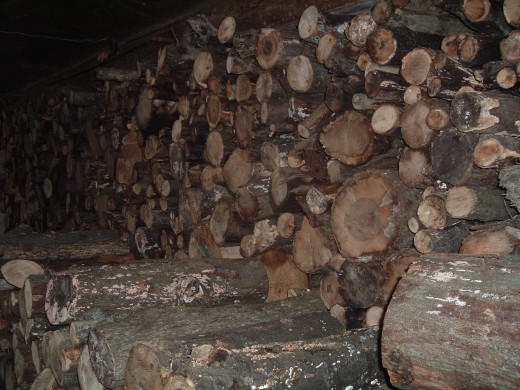
Heating With Wood. Is It Worth The Effort?
In the early Fall when the first frost starts to gather on the lawn, I usually get a fire going at night before I go to bed so it's warm and toasty when I wake up in the morning. I then let it burn out during the day to conserve wood. Later, when the cold wind blows just about every day, somewhere around November 1st, I'll get a fire going and keep it burning 24/7 straight through to April 1st.
When I walk in the back door of my house and I step into my family room, I feel the burst of warm air on my face. As I shake off the frigid air of the outdoors and a very faint sweet smell of wood smoke fills the room, I think to myself it was worth all the work just for this one moment. For this year at least anyways.
Energy Content per air dried full cord in BTU's
Rock Elm
| 32,000
|
|---|---|
Shagbark Hickory
| 30,600
|
White Oak
| 30,600
|
Bitternut Hickory
| 29,200
|
Sugar Maple
| 29,000
|
Beech
| 27,800
|
Red Oak
| 27,300
|
Yellow Birch
| 26,200
|
Red Elm
| 25,400
|
White Ash
| 25,000
|
White Elm
| 24,500
|
Red Maple
| 24,000
|
Tamarack
| 24,000
|
Black Cherry
| 23,500
|
White Birch
| 23,400
|
Black Ash
| 22,600
|
Green Ash
| 22,100
|
Silver Maple
| 21,700
|
Manitoba Maple
| 19,300
|
Large Tooth Aspen
| 18,200
|
Hemlock
| 17,900
|
Trembling Aspen
| 17,700
|
Butternut
| 17,400
|
Balsam Poplar
| 17,260
|
White Pine
| 17,100
|
Basswood
| 17,000
|
White Cedar
| 16,300
|
White Spruce
| 16,200
|
Balsam Fir
| 15,500
|
The more BTU's the better it is for firewood.

